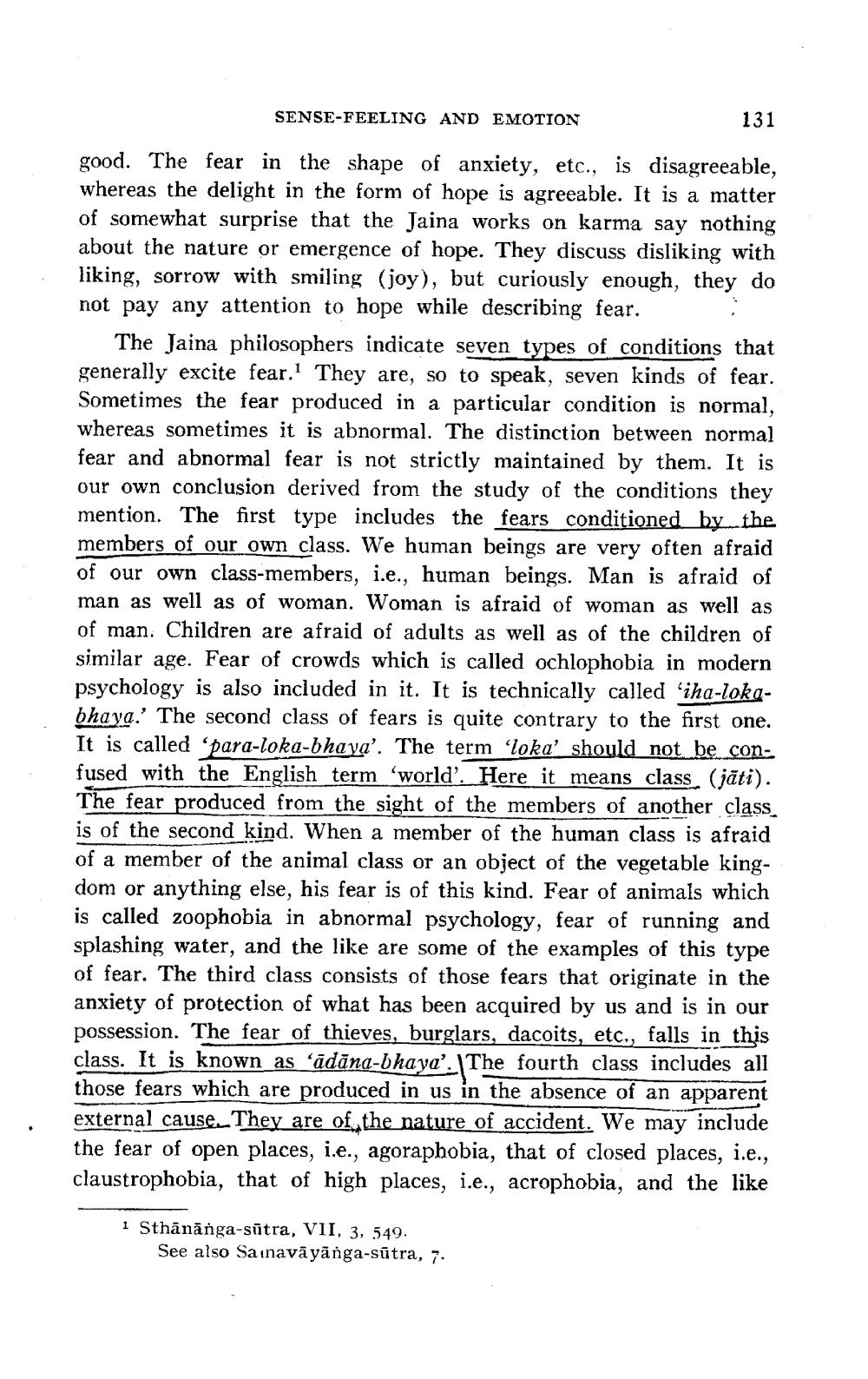________________
SENSE-FEELING AND EMOTION
131
good. The fear in the shape of anxiety, etc., is disagreeable, whereas the delight in the form of hope is agreeable. It is a matter of somewhat surprise that the Jaina works on karma say nothing about the nature or emergence of hope. They discuss disliking with liking, sorrow with smiling (joy), but curiously enough, they do not pay any attention to hope while describing fear.
The Jaina philosophers indicate seven types of conditions that generally excite fear. They are, so to speak, seven kinds of fear. Sometimes the fear produced in a particular condition is normal, whereas sometimes it is abnormal. The distinction between normal fear and abnormal fear is not strictly maintained by them. It is our own conclusion derived from the study of the conditions they mention. The first type includes the fears conditioned by the members of our own class. We human beings are very often afraid of our own class-members, i.e., human beings. Man is afraid of man as well as of woman. Woman is afraid of woman as well as of man. Children are afraid of adults as well as of the children of similar age. Fear of crowds which is called ochlophobia in modern psychology is also included in it. It is technically called 'iha-lokabhaya.' The second class of fears is quite contrary to the first one. It is called 'para-loka-bhaya'. The term 'loka’ should not be con-. fused with the English term 'world'. Here it means class (jāti). The fear produced from the sight of the members of another class is of the second kind. When a member of the human class is afraid of a member of the animal class or an object of the vegetable kingdom or anything else, his fear is of this kind. Fear of animals which is called zoophobia in abnormal psychology, fear of running and splashing water, and the like are some of the examples of this type of fear. The third class consists of those fears that originate in the anxiety of protection of what has been acquired by us and is in our possession. The fear of thieves, burglars, dacoits, etc., falls in this class. It is known as "ādāna-bhaya'. The fourth class includes all those fears which are produced in us in the absence of an apparent external cause. They are of the nature of accident. We may include the fear of open places, i.e., agoraphobia, that of closed places, i.e., claustrophobia, that of high places, i.e., acrophobia, and the like
1 Sthānānga-sūtra, VII, 3, 549.
See also Sa inavāyānga-sútra, 7.




